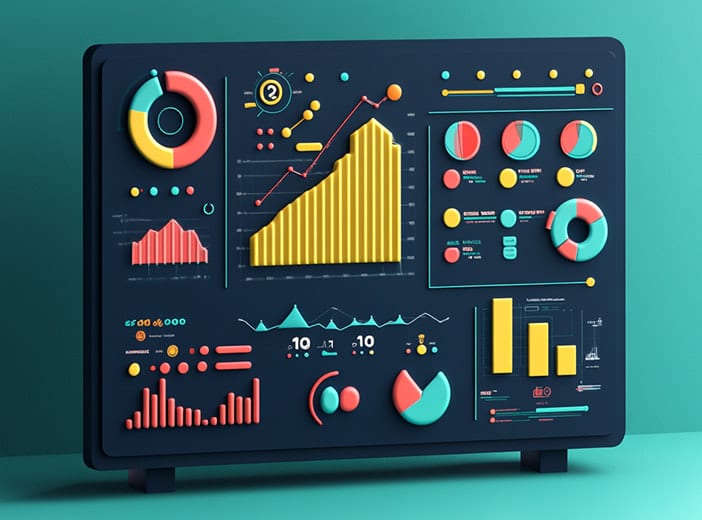Glossary
Chief Data Officer (CDO)
The Chief Data Officer (CDO) is the senior executive responsible for how an organization utilizes and governs data to drive maximum business value.
What is a Chief Data Officer (CDO)?
The Chief Data Officer (CDO) is the senior executive responsible for how an organization utilizes and governs data to drive maximum business value. They have an enterprise-wide responsibility for data as an asset, covering data processing, analysis, data mining, data strategy, and information exchange, all of which help drive data democratization.
The first recorded CDO was appointed in 2002 at financial services company Capital One. The role has now spread more widely, with 74% of organizations surveyed by NewVantage Partners in 2022 having chief data or analytics officers, or both combined in one role. Given the cross-organizational nature of the role, it is logical for the CDO to be part of the C-suite or a level below.
The role began essentially as part of compliance, ensuring that data was used correctly and in line with regulations such as the GDPR. It has now moved on to using data to drive better business outcomes. Therefore, normally the CDO is measured and evaluated against business oriented key performance indicators (KPIs).
What is the difference between a Chief Data Officer, a Chief Information Officer, and a Chief Digital Officer?
As a relatively new position, many are unclear on what a Chief Data Officer’s (CDO) role is, particularly when compared to that of the Chief Information Officer (CIO), or the Chief Digital Officer (also abbreviated to CDO).
The main differences are:
- The Chief Digital Officer is responsible for the digitization and digital transformation of an organization. This includes automating previously manual processes through technology. While these processes may use data, the Chief Digital Officer is not responsible for this data.
- The Chief Information Officer is responsible for the IT infrastructure through which data flows, and where it is stored.
- The Chief Data Officer has a business-led responsibility for data as an asset, unlocking its value and driving data democratization.
Caroline Carruthers, director at consulting firm Carruthers and Jackson, former Chief Data Officer of Network Rail, uses the simple analogy of a bucket of water to illustrate the difference between the Chief Data Officer and Chief Information Officer role:
The CIO is responsible for the bucket, including that it is the right size, it is fit for purpose, safe and located in the right place.
The Chief Data Officer is responsible for the water that goes into and leaves the bucket. They need to ensure it goes to the right place, that it’s the right quality and the right fluid to begin with.
This clearly demonstrates the need for both roles, and the split between the infrastructure/IT responsibility of the CIO and the business/content responsibility of the CDO.
What are the roles and responsibilities of a CDO?
The role of the Chief Data Officer covers a wide range of activities:
- Creating a data vision and strategy
- Data management, including compliance and the flow of data throughout its lifecycle
- Ensuring data quality
- Data governance (policies, monitoring and management)
- Master data management
- Data analytics/business intelligence (although this can be handled by a Chief Analytics Officer)
- Enabling data usability, availability, trust, and efficiency, including through self-service data portals
- Building a data culture within the organization
- Establishing corporate practices that comply with data protection and privacy regulations
- Promoting data democratization and driving data literacy across the enterprise
Who does the Chief Data Officer report to?
Who the CDO reports to varies between organizations. However, given their business-focused role it should logically be a senior business leader, such as a CEO or COO.
While CDOs and CIOs work closely together, this should be on an equal footing. Therefore the CDO should not report to the CIO, as that lessens the business focus of the role.
Why is it important to have a Chief Data Officer?
A Chief Data Officer is one of the pillars of a successful data strategy, providing a focal point for the organization to become more data-driven and enabling data democratization.
CDOs are responsible for ensuring the organization:
- Uses data to perform more efficiently, with increased productivity
- Relies on data to better engage with customers, employees and other stakeholders
- Improves existing revenue streams through data
- Innovates and develops new internal and external data-driven business opportunities and use cases
- Builds a data culture where data is at the heart of all decision-making
- Increases data literacy across the organization
- Treats data ethically, ensuring compliance with regulations, protecting privacy and keeping personal information secure
What skills does a Chief Data Officer need?
To succeed a Chief Data Officer needs a range of skills that span both business and technical fields:
- They need business understanding, so that they can ensure data is used to deliver business value
- They require the ability to lead and drive change across the organization
- They should have strong communication skills to engage with both senior management and employees across departments
- They need to have people management skills to lead their team successfully
- They do need technical understanding, but this can be at a high level
- They have to be able to work externally with partners and other stakeholders, as well as internally with employees and managers
Some organizations have employed external candidates as CDOs, as they bring a fresh perspective and new skills. Others have preferred to pick an internal person as CDO, reasoning that they have experience and understanding of how the organization works, enabling them to drive effective change.
What are the challenges to being a successful CDO?
The average tenure of a CDO is currently 30 months, compared to 4.5 years for a CIO. This is directly related to the challenges that CDOs face:
- As the role is new to most companies, it can have unclear responsibilities, hazy priorities and unrealistic expectations from senior management
- Resistance to change from within the organization can slow progress towards data democratization and mean that the CDO struggles to show the value they bring
- On the flipside, with the number of CDO roles expanding, there are additional opportunities for CDOs to move on and progress their career.
Learn more

Data, metadata, data assets, data products: understanding the differences between these key concepts
In an increasingly data-driven world, understanding the differences between data, metadata, data assets, and data products is essential to maximizing their potential. This is because these interrelated yet distinct concepts each play a key role in driving digital transformation by facilitating data sharing and consumption at scale.

How to break down organizational silos to engage everyone in your data project
Organizational silos prevent data sharing and collaboration, increasing risk and reducing efficiency and innovation. How can companies remove them and ensure that data flows seamlessly around the organization so that it can be used by every employee?


